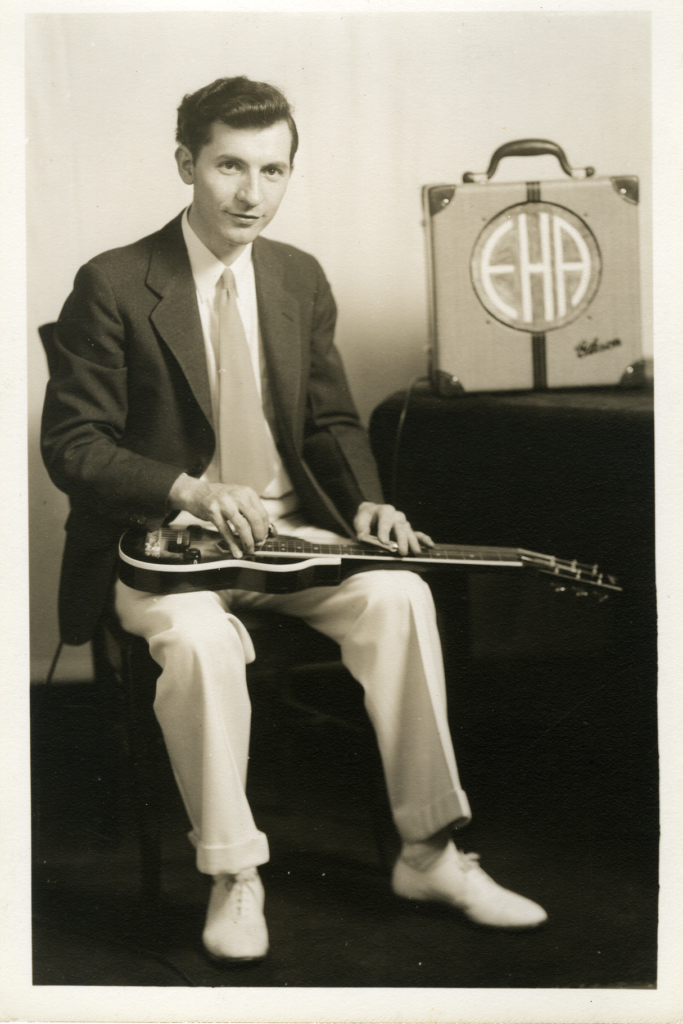10-String, Electric Guitar, Lacquered maple body and a string-through design neck, original rosewood fretboard with pearl inlay, nickel keys with plastic tuning pegs, aluminum bridge and nut, Epiphone Master pickups, and celluloid hand rest.
Today most guitarists consider the Rickenbacker Electro the instrument that launched the electric steel guitar movement during the early 1930s. The Electro’s design strongly influenced Alkire’s design for his EHarp. Rickenbacker’s electrical instruments impressed Alkire who corresponded frequently with George Beauchamp, one of the co-founders of the Rickenbacker Company. In the late 1930s and early 1940s, Rickenbacker produced two examples of Alkire’s new guitar design — the first with 8 strings, and the second with 10 strings. When America joined World War II in 1941, all production on the new Alkire guitar stopped until the end of the war. While Eddie tried to work with the Gibson Guitar Company to mass-produce his new guitar, he was not happy with their lack of attention to his design specifications, and he eventually went with the Epiphone guitar company.
Alkire’s innovations also included numerous altered tunings for the Hawaiian guitar, providing new opportunities for unusual chords and harmonic progressions that were unattainable using standard guitar tunings.

